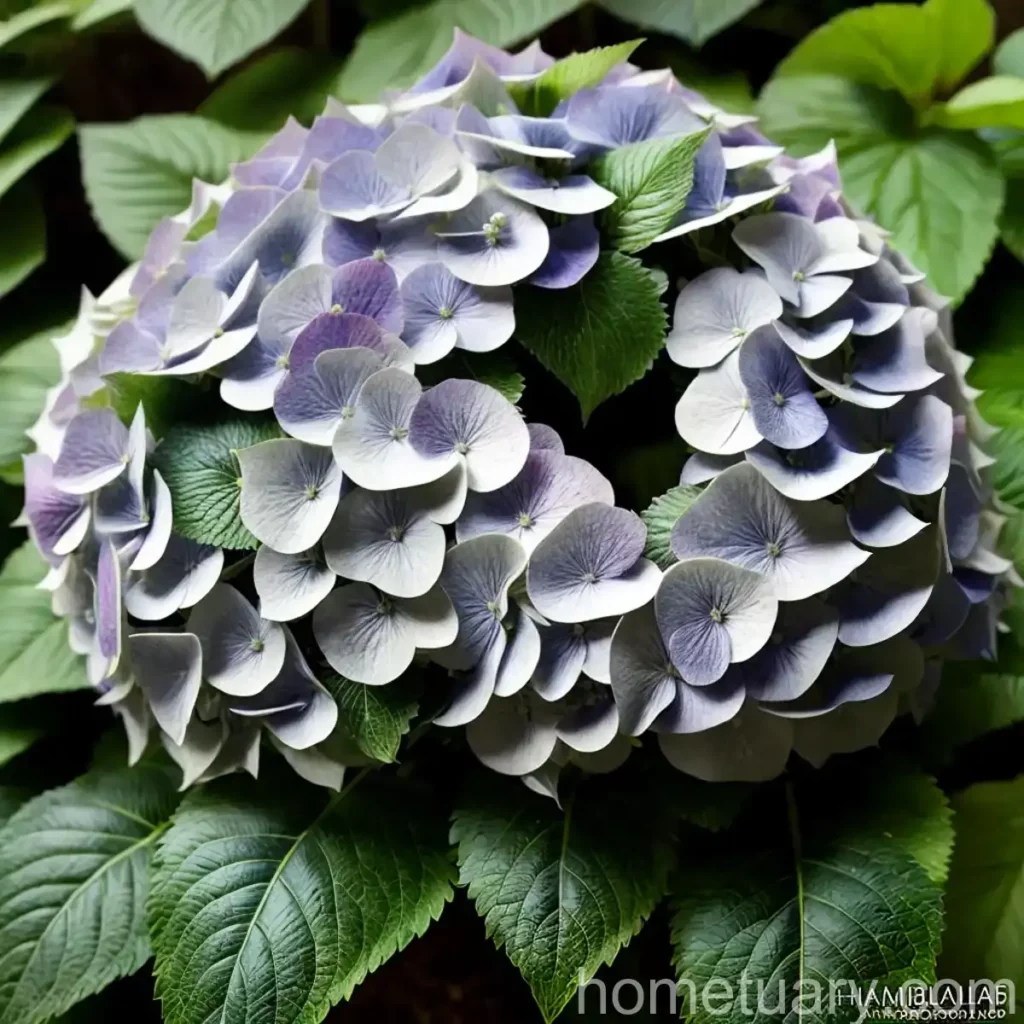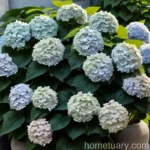Plant Scientist’s Guide to Bigleaf Hydrangea (Hydrangea macrophylla ‘Fanfare’ WEDDING RING)
Bigleaf hydrangea, scientifically known as Hydrangea macrophylla ‘Fanfare’ WEDDING RING, is a stunning and popular flowering plant that is beloved by gardeners for its large, showy blossoms and lush foliage. This plant belongs to the Hydrangeaceae family and is native to Japan, Korea, and China. With its beautiful blooms ranging from pink and blue to lavender and white, the bigleaf hydrangea adds a touch of elegance to any garden or landscape. In this comprehensive guide, we will explore the key aspects of bigleaf hydrangea, including its culture, uses, care requirements, common diseases, and much more.
What is Bigleaf Hydrangea (Hydrangea macrophylla ‘Fanfare’ WEDDING RING)?
Bigleaf hydrangea, also known simply as French hydrangea, is a deciduous shrub that typically reaches a height and spread of 3 to 6 feet. The plant is characterized by its large, glossy, dark green leaves, and clusters of beautiful, showy flowers. The color of the blooms can vary depending on the soil pH, with acidic soils producing blue flowers and alkaline soils producing pink flowers. Bigleaf hydrangeas are popular ornamental plants in gardens, landscapes, and floral arrangements due to their stunning and long-lasting blossoms.
Key Takeaways – Bigleaf Hydrangea (Hydrangea macrophylla ‘Fanfare’ WEDDING RING)
Before delving into the specifics of bigleaf hydrangea care, it’s essential to address the key takeaways associated with this beautiful plant. Below are some key points that will be covered in this guide:
- Culture: Understanding the cultural requirements of bigleaf hydrangeas, including water, sunlight, and soil preferences.
- Uses: Exploring the various uses of bigleaf hydrangeas in landscaping, floral arrangements, and more.
- Care Requirements: Detailed insights into watering, sunlight, fertilizer, soil, pruning, and propagation techniques.
- Common Diseases: Identifying and addressing common diseases that affect bigleaf hydrangeas.
- Common Pests: Recognizing and managing pests that can impact the health of the plant.
- Botanist’s Tips: Expert tips and recommendations for successful cultivation and maintenance of bigleaf hydrangeas.
- Fun Facts: Discovering interesting and lesser-known facts about the bigleaf hydrangea.
- Links to External Resources: Providing additional resources for further information and guidance on bigleaf hydrangea care.
Now, let’s dive into the in-depth exploration of bigleaf hydrangea care, from cultural requirements to potential pests and diseases.
Culture
Understanding the cultural requirements of bigleaf hydrangea is crucial for ensuring the plant thrives and produces stunning blooms. From water and sunlight needs to soil preferences, each aspect plays a vital role in the overall health and vitality of the plant.
Water
Proper watering is essential for the health and vigor of bigleaf hydrangeas. These plants prefer consistently moist, well-drained soil to thrive. While they do not tolerate soggy or waterlogged conditions, they also do not tolerate drought. To maintain optimal soil moisture, consider the following watering guidelines:
- Frequency: Water the plant regularly, especially during dry periods or when the soil becomes dry to the touch.
- Deep Watering: Ensure that the water penetrates deeply into the root zone to encourage healthy root development.
- Mulching: Apply a layer of organic mulch, such as bark chips or compost, around the base of the plant to help retain soil moisture and regulate temperature.
Sunlight
Bigleaf hydrangeas thrive in partial shade to filtered sunlight. While they can tolerate some morning sun, especially in cooler climates, they prefer protection from the intense afternoon sun. When selecting a planting location, consider the following sunlight requirements:
- Morning Sunlight: Choose a location that receives partial morning sun, as this can promote healthy growth and blooming.
- Filtered Shade: If possible, provide the plant with filtered shade during the hottest part of the day, particularly in regions with hot summers.
- Avoid Intense Afternoon Sun: Protect the plant from prolonged exposure to intense afternoon sun, as this can lead to wilting and stress.
Soil
The soil conditions significantly influence the growth, flower color, and overall health of bigleaf hydrangeas. Understanding the soil preferences and making appropriate adjustments can lead to more vibrant and robust plants. Consider the following soil-related factors:
- Acidic Soils for Blue Flowers: To encourage blue blooms, ensure the soil pH is acidic, ideally between 5.2 and 5.5. Acidic soils can be achieved through the application of soil acidifiers or amendments such as elemental sulfur.
- Alkaline Soils for Pink Flowers: If you prefer pink blooms, aim to maintain a slightly alkaline soil pH, ideally between 6.0 and 6.2. This can be achieved through the application of lime or other alkaline soil amendments.
- Well-Drained Soil: Ensure the soil has good drainage to prevent waterlogging, which can lead to root rot and other issues. Amending heavy or clay soils with organic matter can improve drainage.
- Nutrient-Rich Soil: Provide the plant with nutrient-rich soil by incorporating organic compost or well-balanced fertilizers to support healthy growth and blooming.
These cultural considerations lay the foundation for successful bigleaf hydrangea cultivation, creating an environment that promotes optimal growth and vibrant blooms.
Uses
Bigleaf hydrangeas offer a range of uses that extend beyond their natural beauty in garden landscapes. From floral arrangements to accentuating outdoor spaces, the versatile nature of these plants makes them a valuable addition to any garden.
- Landscaping: Bigleaf hydrangeas are commonly used in landscaping to create borders, accents, and focal points within garden beds. Their large, showy blooms add a touch of elegance and vibrancy to outdoor spaces.
- Floral Arrangements: The striking blooms of bigleaf hydrangeas make them a popular choice for cut flower arrangements, whether used alone or combined with other flowers and foliage. Their ability to retain their color and shape makes them an ideal addition to bouquets and centerpieces.
- Container Gardening: Due to their compact size and beautiful blooms, bigleaf hydrangeas are well-suited for container gardening. They can be grown in pots and planters on patios, balconies, and other outdoor areas, adding a pop of color and visual interest.
- Dried Flowers: The blooms of bigleaf hydrangeas are ideal for drying, allowing gardeners to preserve their beauty for long-lasting decorative purposes. Dried hydrangea blossoms can be used in various craft projects, wreaths, and indoor arrangements.
- Accentuating Outdoor Spaces: Whether used as standalone shrubs or integrated into mixed plantings, bigleaf hydrangeas contribute to the visual appeal of outdoor spaces. Their lush foliage and bountiful blooms create a captivating and inviting atmosphere.
Overall, the uses of bigleaf hydrangeas extend to both aesthetic and practical applications, making them a cherished addition to garden landscapes and floral arrangements.
Care Requirements
Successfully caring for bigleaf hydrangeas involves paying careful attention to various maintenance aspects, including watering, fertilizing, soil management, and pruning. By understanding and implementing appropriate care techniques, you can help your bigleaf hydrangeas thrive and flourish.















